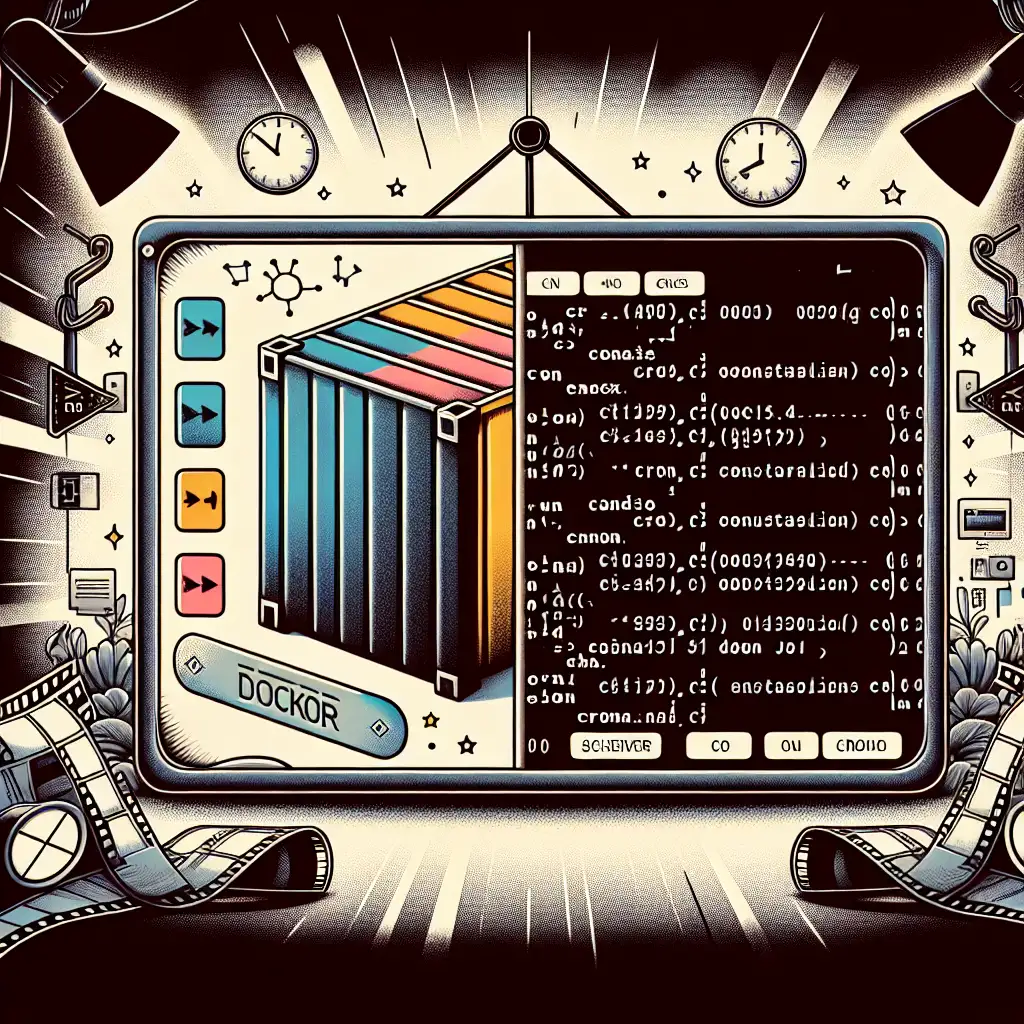Mastering Scheduled Tasks: How to Seamlessly Add and Manage Cron Jobs Inside Docker Containers
Most developers either avoid running cron inside containers or resort to external schedulers, but embedding cron jobs within Docker unlocks a cleaner, more robust solution—if done right. This guide exposes common pitfalls and shows a no-nonsense approach to managing scheduled tasks directly where your app lives.
Why Run Cron Jobs Inside Docker Containers?
Containers help us package applications with all their dependencies, offering consistency across environments. But when it comes to automation — like scheduled tasks — it’s tempting to step outside the container world and rely on host-based cron or cloud-specific schedulers.
However, embedding cron jobs inside your Docker container can:
- Keep everything self-contained: No dependencies outside the container.
- Enhance portability: Your app and its maintenance scripts move together.
- Simplify CI/CD: Cron jobs are versioned and updated alongside your code.
- Avoid complex orchestration: You don’t need extra infrastructure just for scheduling.
With that said, there are right ways and wrong ways to do this. Let’s dive in.
Common Pitfalls When Adding Cron to Docker Containers
- Multiple processes inside one container: Docker containers run a single main process. Running both your app and cron as separate daemons in the same container without a proper init system leads to management headaches.
- Logs going nowhere: Cron outputs often disappear because the container doesn’t route logs properly, making troubleshooting hard.
- Cron not starting at all: Misconfigured
CMD/ENTRYPOINTor missing daemonization leaves the cron service inactive. - Time drift issues: Containers can sometimes suffer from time sync problems if the host clock changes unexpectedly.
Avoid these pitfalls by following best practices we'll cover below.
Step-by-Step Guide: Adding Cron Jobs to a Docker Container
1. Choose Your Base Image Wisely
Some Linux distributions make cron setup easier:
- Debian/Ubuntu-based images come with
cron. - Alpine is minimal but requires installing
crond.
For this example, we’ll use an Ubuntu base image.
FROM ubuntu:22.04
2. Install Cron & Other Dependencies
RUN apt-get update && apt-get install -y cron curl
Add any of your app’s dependencies here as well.
3. Add Your App Code & Scripts
Copy the app and the script you want to schedule into the image:
COPY ./app /usr/src/app
COPY ./scripts /usr/src/scripts
For example, /usr/src/scripts/backup.sh is your cron job script, make sure it’s executable (chmod +x backup.sh).
4. Add a Cron Job File
Create a cron file (mycron) that specifies schedules:
# Example: run backup.sh at 2am daily
0 2 * * * /usr/bin/bash /usr/src/scripts/backup.sh >> /var/log/backup.log 2>&1
Add this file to your image:
COPY mycron /etc/cron.d/mycron
RUN chmod 0644 /etc/cron.d/mycron
You must register this file with cron by moving it into /etc/cron.d/ (we’ve copied right there) and ensure permissions are correct.
5. Apply the Crontab & Set Up Logging
Tell the system crontab daemon about your job:
RUN crontab /etc/cron.d/mycron
Make sure logs go somewhere accessible — here we redirect output of backup.sh into /var/log/backup.log.
6. Run Cron in Foreground + Your App Using a Supervisord or Init System (Recommended)
Since running multiple processes requires care, use a lightweight process manager like supervisord or use bash -c tricks carefully.
Example using supervisord:
Install supervisord in your Dockerfile:
RUN apt-get install -y supervisor
COPY supervisord.conf /etc/supervisor/conf.d/supervisord.conf
Example minimal supervisord.conf:
[supervisord]
nodaemon=true
[program:cron]
command=cron -f
[program:app]
command=/usr/bin/python3 /usr/src/app/app.py ; replace with your actual app start command
The key flag here is cron -f — keeps cron in foreground so supervisord can monitor it properly.
7. Update Docker CMD to Start Supervisord
CMD ["supervisord", "-c", "/etc/supervisor/conf.d/supervisord.conf"]
Alternative Simpler Approach: Run Cron Only for Lightweight Scheduled Tasks
If your scheduling needs are simple and you don't want to manage multiple processes, consider this minimal pattern:
Create an entrypoint script (entrypoint.sh) that starts cron in background then runs main app.
#!/bin/bash
# Start cron service in background
service cron start
# Run main application (replace with yours)
exec "$@"
Update Dockerfile:
COPY entrypoint.sh /entrypoint.sh
RUN chmod +x /entrypoint.sh
ENTRYPOINT ["/entrypoint.sh"]
CMD ["python3", "/usr/src/app/app.py"]
This way, container starts cron daemon then runs your app normally.
Note: This approach is okay for simpler apps but less robust than process managers if you want full control over lifecycle or supervision.
Verify Your Cron Job Is Running Inside Container
After building and running your container:
docker exec -it <container_name> bash -c "ps aux | grep cron"
docker exec -it <container_name> bash -c "cat /var/log/backup.log"
docker exec -it <container_name> crontab -l # Check installed crons for current user (usually root)
Verify logs exist and check timestamps of task execution output files.
Summary Checklist
- Choose base image that supports cron or install it manually.
- Add scripts and make sure they're executable.
- Write proper cron schedule files with output redirection.
- Use proper permissions on crontab files.
- Use
cron -ftogether with supervisord (or similar) for multi-process management. - Alternatively, start
service cron startbefore launching app for simple setups. - Expose logs by redirecting stdout/stderr from scripts so troubleshooting is easy.
- Test thoroughly before production deployment!
Wrapping Up
Running scheduled tasks inside Docker containers may be tricky at first due to process management nuances but once mastered adds significant benefits for consistency and portability.
By following best practices like using supervisors or entrypoint scripts and properly configuring logging, you create maintainable automated workflows tightly coupled with your containerized applications—no external schedulers required!
If you have questions or want example repos referencing this pattern, feel free to drop a comment below!
Happy automating inside containers! 🚀
